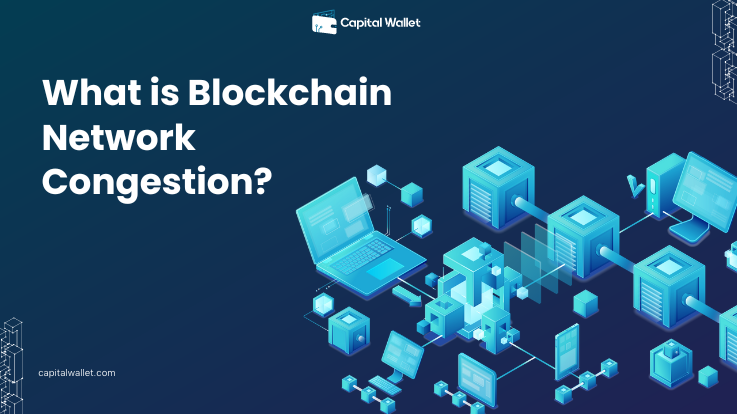Blockchain Network Congestion describes a scenario in which there are more transactions pending processing on a blockchain network than there is time for the network to handle them all. Longer transaction confirmation delays, greater transaction fees, and occasionally the inability to complete transactions entirely can be the outcome of Network Congestion.

This problem can hinder the efficiency and usability of blockchain-based applications and platforms. In this post, we’ll explore blockchain network congestion, including its causes, ways to identify it, and tips to help you address it.
The network’s protocol’s limitations on block size and block duration are the cause of blockchain network congestion. Every blockchain network has a maximum number of transactions that can be contained in a single block as well as a predetermined amount of time that passes before new blocks are created. Congestion occurs when the number of pending transactions exceeds the network’s capacity, leading to a backlog.
Why Does Network Congestion Occur
There are several reasons why it can occur:-
Increased Network Activity
During periods of high demand, such as when a new cryptocurrency is launched or when market conditions are favorable, the number of transactions submitted to the network can surge, overwhelming the network’s capacity.
Larger Transaction Sizes
Some transactions, such as those involving complex smart contracts or large data transfers, can take up more block space, reducing the network’s overall throughput.
Network Upgrades or Forks
Changes to the blockchain protocol, such as network upgrades or hard forks, can sometimes disrupt the network’s normal operations, leading to temporary congestion.
Miner Behavior
In some cases, miners may prioritize certain types of transactions or hold off on processing transactions until the fees are higher, contributing to network congestion.
How To Identify Network Congestion
There are several ways to identify if a blockchain network is experiencing congestion:
Transaction Confirmation Times
One of the clearest signs of network congestion is an increase in the time it takes for transactions to be confirmed on the blockchain.
Transaction Fees
As the network becomes congested, the fees required to have a transaction included in the next block will typically rise, as users compete for limited block space.
Mempool Size
The mempool is the pool of unconfirmed transactions waiting to be included in the next block. An increase in the mempool size is a clear indication of network congestion.
Ways To Address Network Congestion
To address congestion, several strategies can be employed:
Scaling Solutions
Blockchain networks are constantly working on scaling solutions, such as layer-2 protocols, sharding, and sidechains, to increase their overall throughput and reduce congestion.
Fee Optimization
Users can optimize their transaction fees to ensure their transactions are processed in a timely manner, without overpaying.
Network Upgrades
Blockchain networks may periodically update their protocols to increase block sizes, reduce block times, or implement other improvements to address congestion.
Conclusion
Network Congestion is a common challenge for many blockchain-based platforms and applications. Understanding the causes, symptoms, and potential solutions to this issue is crucial for ensuring the smooth and efficient operation of your blockchain-powered projects. By staying informed and proactive, you can navigate the complexities of network congestion and provide a seamless experience for your users.
FAQs (Frequently Asked Questions):-
What is Blockchain Network Congestion?
Network Congestion refers to a situation where the number of transactions waiting to be processed on a blockchain network exceeds the network’s capacity to process them in a timely manner. This can result in longer transaction confirmation times, higher transaction fees, and, in some cases, the inability to complete transactions.
Why Does Blockchain Network Congestion Occur?
Network Congestion can occur due to several reasons, including increased network activity, larger transaction sizes, network upgrades or forks, and miner behavior that prioritizes certain transactions or holds off on processing transactions until fees are higher.
How Can I Identify Blockchain Network Congestion?
There are a few ways to identify if a blockchain network is experiencing congestion, including:
Increased transaction confirmation times
Rising transaction fees
Larger mempool size (the pool of unconfirmed transactions waiting to be included in the next block)
How Can Blockchain Network Congestion Be Addressed?
To address network congestion, several strategies can be employed, such as:

